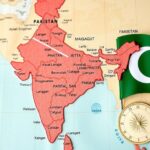Bangladesh’s Trade Imbalance with Saarc Nations: A Call for Policy Reform
A recent Bangladesh Bank report reveals that imports from Saarc nations significantly exceed exports, with imports at $9.76 billion versus $1.74 billion in FY2023-24. India remains the largest trading partner, accounting for a majority of both imports and exports. The report calls for increased local production and diversification of exports to mitigate trade deficits within the region.
Bangladesh faces a significant trade imbalance with Saarc nations, as reported by the Bangladesh Bank (BB) for the fiscal year 2023-2024. Bangladesh’s total import payments to Saarc countries reached approximately $9.76 billion, while export earnings amounted to only $1.74 billion, highlighting a reliance on imports from neighboring countries, particularly India.
Imports from Saarc nations constituted 15.44 percent of Bangladesh’s total imports of $63.22 billion in FY24, slightly increasing from the previous year. Conversely, exports made up just 4.47 percent of total shipments, which were around $39 billion in the same fiscal year. The BB report suggests that authorities should implement policy measures to bolster local production and decrease dependency on imports.
Overall imports decreased in FY24 in line with a downward trend in trade, which was observed for both imports and exports. Notably, over 92 percent of Bangladesh’s imports from Saarc nations originated from India, which also accounted for 90 percent of its exports to the region. Pakistan, Nepal, and Sri Lanka followed as the top destinations for Bangladeshi goods within Saarc.
Bangladesh’s imports also included a variety of goods such as textiles, chemical products, and machinery, while key exports comprised garments and agricultural products. The report indicated varying trends in export receipts from Saarc countries, with some nations experiencing consistent growth while others faced fluctuations, influenced by economic factors and trade agreements.
In FY24, exports to Pakistan fell sharply by 25 percent, totaling only $62 million, despite being the second-largest source of imports. The Maldives, Bhutan, and Afghanistan collectively received around $25 million worth of Bangladeshi goods, with these earnings remaining stagnant. The BB emphasized the need for authorities to enhance export earnings by diversifying the range of products sold to Saarc countries.
The BB concluded that while Bangladesh continues to show economic growth, it is crucial to explore new opportunities and address existing challenges in trade. Strengthening regional cooperation and mitigating trade imbalances will foster sustainable economic development in the future.
In conclusion, Bangladesh’s trade imbalance with Saarc nations is marked by significantly higher import payments compared to export earnings. The heavy reliance on imports, particularly from India, poses economic challenges. Moving forward, the BB highlights the importance of policy measures aimed at boosting local production and diversifying export offerings. Addressing these trade imbalances is fundamental for sustainable economic growth and regional cooperation in South Asia.
Original Source: www.uniindia.com






Post Comment